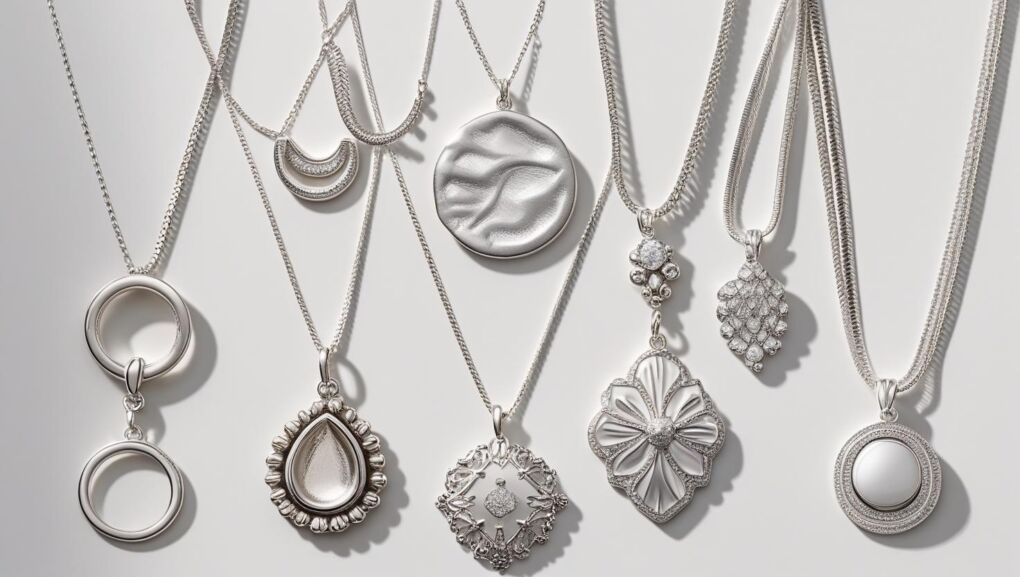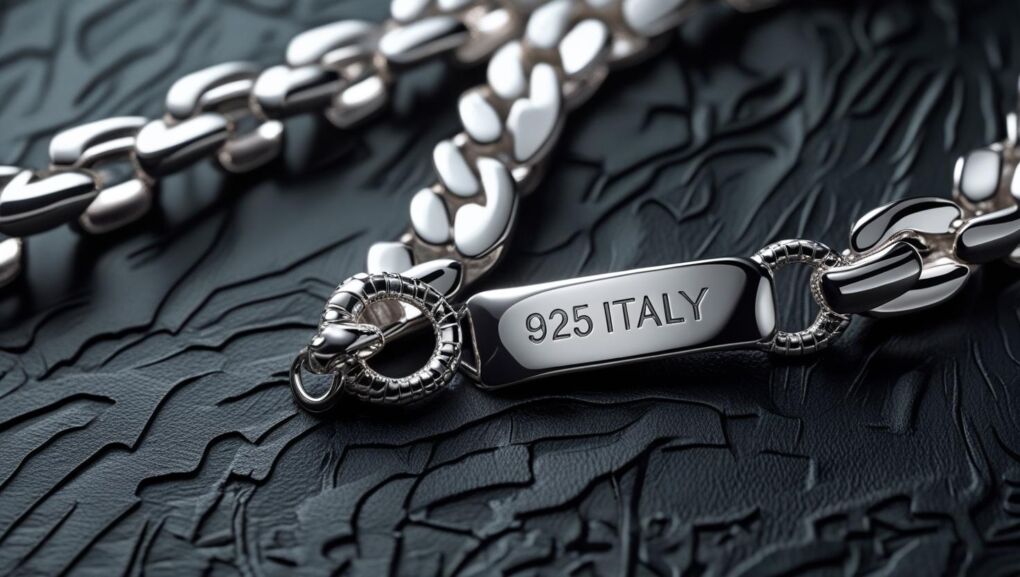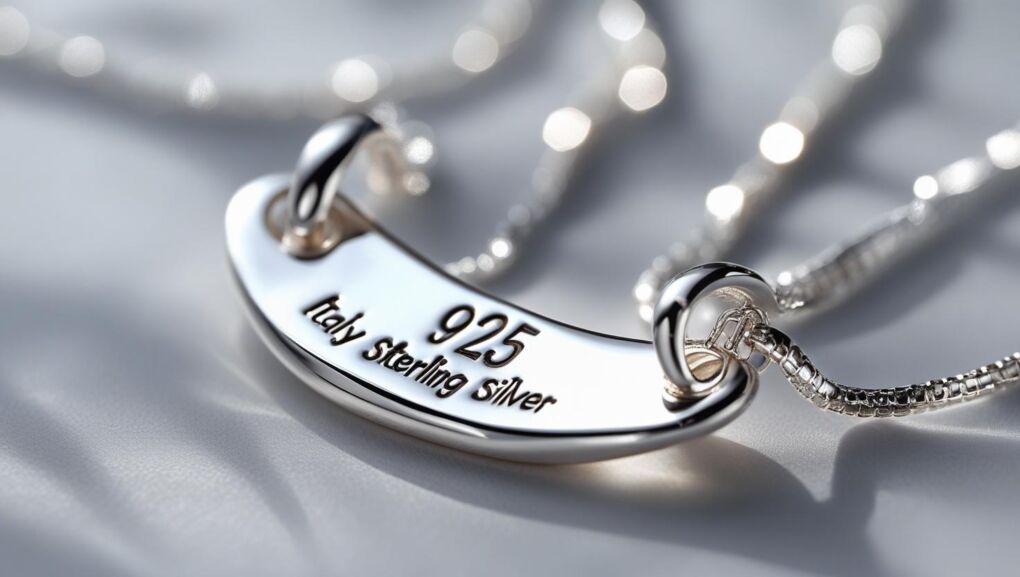
925 Italy silver jewelry has earned a reputation for elegance, quality, and timeless appeal, but with that prestige comes a flood of imitations. Whether you’re buying your first sterling silver piece or adding to an existing collection, knowing how to spot the real deal is essential. Counterfeit silver isn’t just disappointing; it can tarnish quickly, cause skin irritation, or lack the durability you expect from genuine Italian craftsmanship.
In this guide, you’ll learn exactly how to identify authentic 925 Italy silver, from hallmark checks to easy at-home tests. We’ll also cover how to care for your sterling silver and what to avoid when shopping. Let’s dive into the key signs of quality so you can shop with confidence and style.
What Does 925 Italy Mean?

When shopping for jewelry, you may have come across the stamp “925 Italy” on silver pieces. But what exactly does that mean, and why does it matter?
925 Italy refers to sterling silver that’s composed of 92.5% pure silver and 7.5% alloy (typically copper). The “Italy” portion indicates the piece was made in Italy, a country known for superior craftsmanship standards in jewelry-making.
Authentic 925 Italy sterling silver is widely respected for its durability, shine, and elegance. It’s commonly used in everyday accessories, especially in timeless designs like the silver chain.
But with the growing popularity of sterling silver, there’s also an increase in counterfeit items.
This makes it essential to know how to differentiate the genuine from the fake. Real 925 Italy jewelry offers not just elegance but value and cultural heritage that spans centuries.
How to Tell If 925 Italy Sterling Silver Is Real

Identifying real 925 Italy silver requires a combination of visual inspection, simple physical tests, and smart buyer awareness. Each method plays a role in verifying authenticity, whether you’re shopping online or examining a piece in person. Let’s break down each step to help you make confident, informed decisions.
1. Check the Stamp and Hallmarks
Every authentic 925 Italy piece should carry one or more of the following:
- A “925” stamp: This signifies 92.5% pure silver content.
- The word “Italy” Denotes the origin.
- A maker’s mark or brand logo.
Some high-end Italian silver manufacturers use additional hallmarks to guarantee authenticity. A missing or irregular stamp is often the first red flag that you’re not dealing with genuine 925 Italy sterling silver.
Pro Tip: Use a magnifying glass or jewelry loupe to inspect smaller engravings or markings that aren’t visible to the naked eye.
2. Perform a Magnet Test
Silver is not magnetic, so it should not be attracted to a magnet under normal circumstances. If your jewelry sticks or pulls toward a magnet, it likely contains a significant amount of iron, nickel, or other base metals, which means it’s not genuine sterling silver. A real 925 Italy item will remain completely unaffected by the magnet.
While this test isn’t foolproof and won’t verify purity levels, it’s a quick and easy way to spot obvious fakes. It’s especially useful when shopping secondhand or checking items without access to professional tools. Just remember: combine this test with others for a more accurate assessment.
Common Counterfeit Signs to Watch Out For
The silver jewelry market is saturated with fake products. Here’s how to stay one step ahead and recognize low-quality imitations.
- Too Shiny or Too Dull: Fake silver often has a mirror-like sheen or, conversely, a lifeless finish. Authentic 925 Italy has a soft, natural glow.
- Extremely Cheap Pricing: If the deal looks too good to be true, it probably is. Real silver has intrinsic value, and Italian craftsmanship adds to the price.
- Green or Blue Stains on Skin: This means your piece likely has a high percentage of copper or nickel, not sterling silver.
- No Patina Over Time: Real silver naturally oxidizes and forms a soft patina that many people find charming. Fake items often remain unnaturally bright or peel.
Counterfeit jewelry can also cause skin irritation or allergic reactions, which authentic 925 Italy generally does not. This makes authenticity not just a financial issue but a health one.
Physical and Chemical Tests for Authenticity
Looking for extra peace of mind that your silver is authentic? Try combining a few simple but effective methods to help verify whether your piece is truly made of 925 Italy sterling silver. These techniques are easy to apply and can reveal a lot about the quality and legitimacy of your jewelry.
Professional Appraisal
Jewelers use professional equipment and expertise to verify the originality of silver. Some services they may offer include:
- Acid testing: A drop of nitric acid can reveal base metals beneath the surface.
- Electronic testing: Measures conductivity and purity levels.
- X-ray fluorescence (XRF): Offers precise elemental analysis without damaging the piece.
Although it might cost $20–$50 per item, it’s a worthwhile investment, especially for expensive purchases or heirlooms.
At-Home DIY Tests
If you’re not ready to visit a jeweler, try these easy home tests:
- Rub test: Rub the piece with a soft white cloth. If black marks appear, that’s a good sign of oxidized silver.
- Ice test: Real silver conducts heat rapidly. Ice placed on real 925 Italy silver will melt faster than on a fake.
- Smell test: Authentic silver should be odorless. A metallic or “tinny” smell could mean the presence of cheaper materials.
- Weight check: Real silver feels heavy and dense for its size. Fake jewelry often feels light or hollow.
Be sure to test multiple features rather than relying on just one. Combining methods increases the reliability of your results.
Understanding the Value of Italian 925 Sterling Silver
When you invest in 925 Italy silver, you’re not just purchasing a piece of fine jewelry; you’re investing in heritage, artistry, and timeless value. Italian silver is world-renowned for its rich history, refined techniques, and innovative craftsmanship that blends tradition with modern flair.
Key reasons why 925 Italy silver is so highly valued:
- Craftsmanship: Italy has a long-standing reputation for producing master silversmiths. Generations of artisans have passed down techniques that ensure each piece is not only beautiful but meticulously constructed.
- Timeless design: Many 925 Italy silver pieces feature designs that transcend fleeting trends. Whether you’re drawn to vintage elegance or modern minimalism, Italian silver complements both styles with ease.
- International recognition: The “925 Italy” stamp is globally respected and serves as a trusted marker of genuineness and quality. It reassures buyers that their jewelry meets high standards in both purity and design.
Whether you’re choosing a bold cuff, a refined bracelet, or an elegant pendant from the 925 Italy Silver Necklace collection, these sterling silver necklace designs often become go-to staples in any jewelry wardrobe, perfect for layering, gifting, or daily wear.
Why Jewelry Marked’ ‘925 Italy’ Matters
When it comes to buying silver jewelry, originality isn’t just a nice-to-have; it’s a must. Wearing or gifting fake silver can lead to more than just disappointment:
- The piece may tarnish quickly or even corrode.
- It might cause skin irritation or allergic reactions.
- The jewelry could break easily due to cheap, weak materials.
- You lose the long-term value of a piece you hoped to keep or pass down.
In contrast, real 925 Italy silver stands the test of time. It offers:
- Lasting luster with minimal maintenance
- Resistance to everyday wear, thanks to solid craftsmanship
- Long-term resale or appraisal value
One of the most important things to look for when checking legitimacy is whether the piece is jewelry marked correctly. Authentic silver jewelry should have visible, well-engraved stamps, like “925” to indicate silver purity and “Italy” to confirm its origin. These marks are typically found in discreet spots like clasps, inner bands, or tag plates.
These hallmarks aren’t just decorative, they’re your first line of defense against fakes. A genuine jewelry mark tells you:
- The metal content is verified
- The country of manufacture meets high production standards
- You’re purchasing something with true, traceable value
If a piece is missing these markings or they appear sloppy or inconsistent, it’s likely not authentic. That’s why checking if a piece is properly jewelry marked is one of the smartest and easiest ways to protect your investment.
Tips for Buying 925 Italy Silver Chain Safely
Here’s how to ensure your next purchase is the real deal:
- Only buy from trusted brands or sellers with established reputations and positive customer feedback. Reputable sellers are more likely to offer genuine 925 Italy silver and stand behind their products.
- Ask for proper documentation, such as certificates of originality, detailed product descriptions, or manufacturer warranties. These details can provide extra assurance that the item meets quality standards.
- Avoid street vendors or unverified marketplaces that can’t guarantee product quality. While the price might be tempting, these sources are often where counterfeits circulate.
- Examine product photos and buyer reviews when purchasing online. Zoom in on hallmarks, look for clear close-ups, and read what other customers say about the product’s appearance and durability.
- Look for consistency in materials, price, and branding. If a deal seems drastically cheaper than similar items from other sellers, that’s often a red flag.
Bonus Tip: Use a silver weight chart to estimate the expected weight for different chain styles and sizes. Underweight jewelry can indicate it’s hollow, plated, or made with lower-quality metals, not solid sterling silver.
How to Care for Authentic 925 Italy Silver
Once you’ve confirmed the genuineness of your 925 Italy silver piece, the next step is to protect your investment with proper care. Maintaining your jewelry not only keeps it looking beautiful but also ensures its durability, resale value, and lasting shine for years to come. A little daily attention can go a long way in preserving its quality and elegance.
Daily Care Tips
- Remove silver jewelry before using beauty products or cleaning agents.
- Store each piece in its own anti-tarnish pouch or a soft cloth to avoid scratches.
- Don’t wear silver in hot tubs, swimming pools, or saltwater environments.
Cleaning Suggestions
- Use a polishing cloth specifically designed for sterling silver.
- Make a gentle cleaning solution with warm water and baking soda. Soak for 5–10 minutes and brush with a soft toothbrush.
- Rinse thoroughly and dry immediately to prevent water stains.
Well-cared-for 925 Italy silver will maintain its charm and luxury appeal for years.
Looking to pair your authentic 925 Italy silver with other elegant pieces? Browse Teddy Howler’s range of beautifully designed Italian-inspired Silver Bracelets, perfect complements to your jewelry collection.
Summary Points
- 925 Italy silver means 92.5% pure silver made in Italy, known for top-tier craftsmanship and value.
- You can identify real silver through stamps, physical tests, and buying from reputable sellers.
- Caring for your silver keeps it looking new and helps it retain both its beauty and worth.
Frequently Asked Questions
Q1: Is 925 Italy silver better than regular 925 silver?
A1: The “Italy” stamp means the piece was made in Italy, where silver craftsmanship is world-renowned. While both use 92.5% silver, Italian pieces typically offer superior design and detail.
Q2: Can fake jewelry have a 925 Italy stamp?
A2: Yes. Counterfeiters often add fake markings. That’s why testing, checking the source, and understanding other signs of authenticity are essential.
Q3: Does real 925 Italy silver tarnish?
A3: Yes, it can develop a soft patina over time, which many collectors love. The tarnish can easily be cleaned, restoring the original shine.
